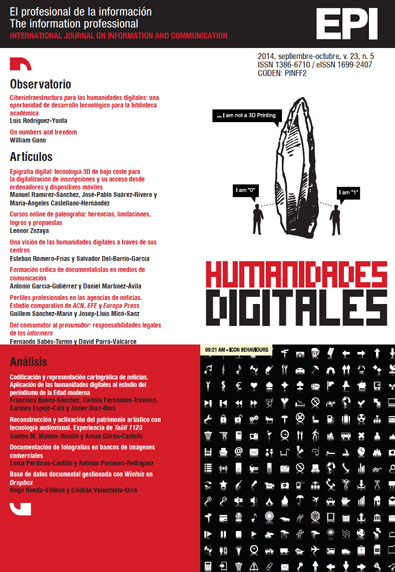Digital epigraphy: 3D low-cost technology for epigraphy digitalization and widespreading of the results
DOI:
https://doi.org/10.3145/epi.2014.sep.03Keywords:
Digitization, Epigraphy, 3D, Digital photography, Roman inscriptions, Personal computers, Mobile devices, Methods, Technologies.Abstract
The possibilities of image based modeling (IBM) as a 3D scanning technique for modeling low cost Roman inscriptions are analyzed. The study has been carried out at the National Museum of Archaeology (Madrid), where various Roman inscriptions (on stone, bronze and clay) were examined. The results obtained have proved to be excellent as related to the study and widespreading of this type of historical documentation. The 3D Roman inscriptions can be incorporated into digital epigraphy projects in progress, allowing access via personal computers and mobile devices, without extra costs to researchers.
Downloads
Downloads
Published
How to Cite
Issue
Section
License
Dissemination conditions of the articles once they are published
Authors can freely disseminate their articles on websites, social networks and repositories
However, the following conditions must be respected:
- Only the editorial version should be made public. Please do not publish preprints, postprints or proofs.
- Along with this copy, a specific mention of the publication in which the text has appeared must be included, also adding a clickable link to the URL: http://www.profesionaldelainformacion.com
- Only the final editorial version should be made public. Please do not publish preprints, postprints or proofs.
- Along with that copy, a specific mention of the publication in which the text has appeared must be included, also adding a clickable link to the URL: http://revista.profesionaldelainformacion.com
Profesional de la información journal offers the articles in open access with a Creative Commons BY license.




